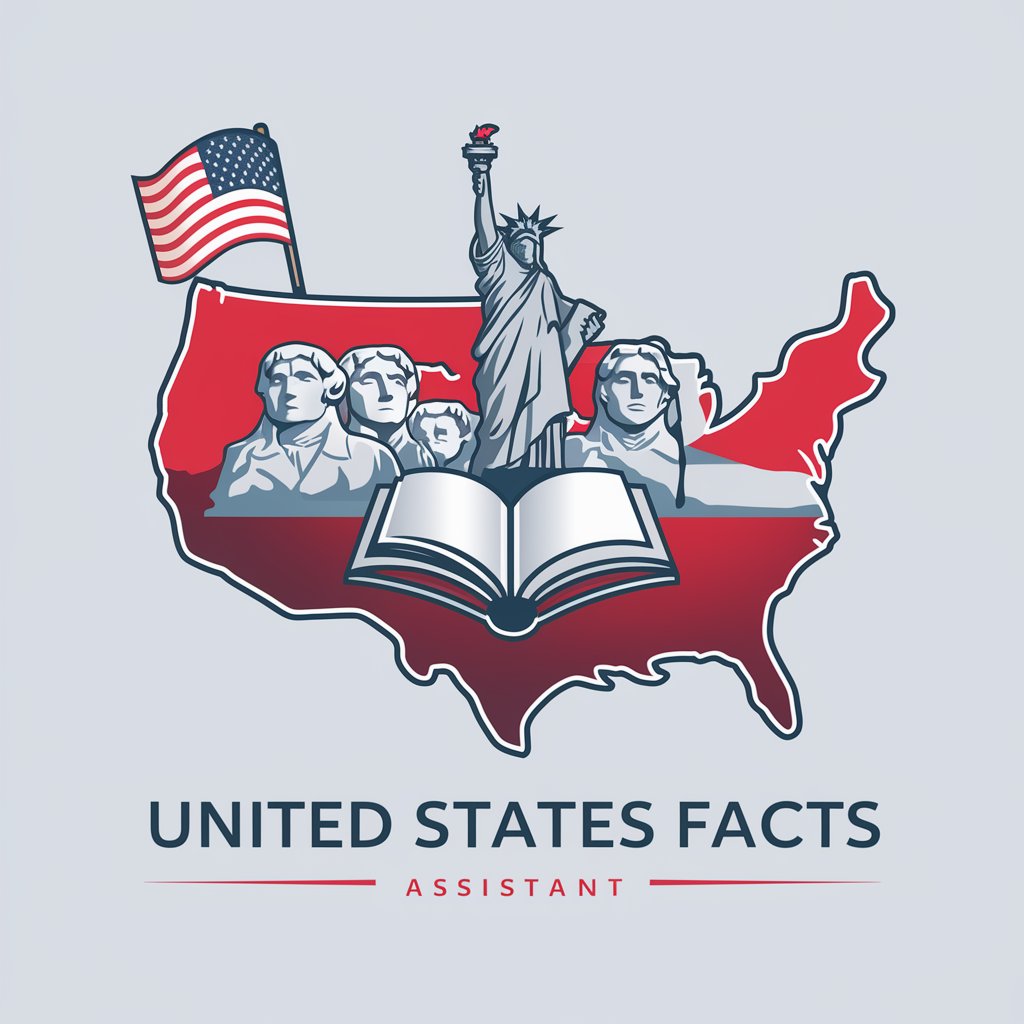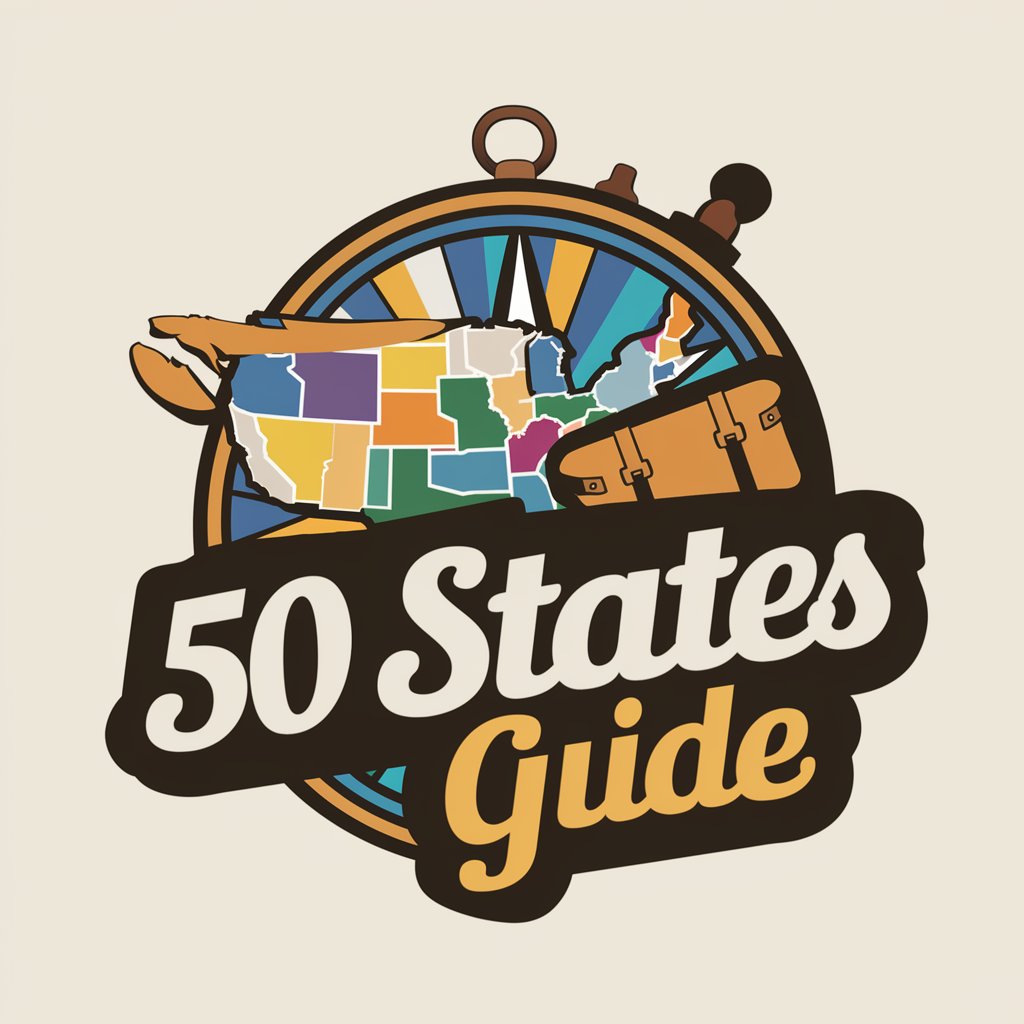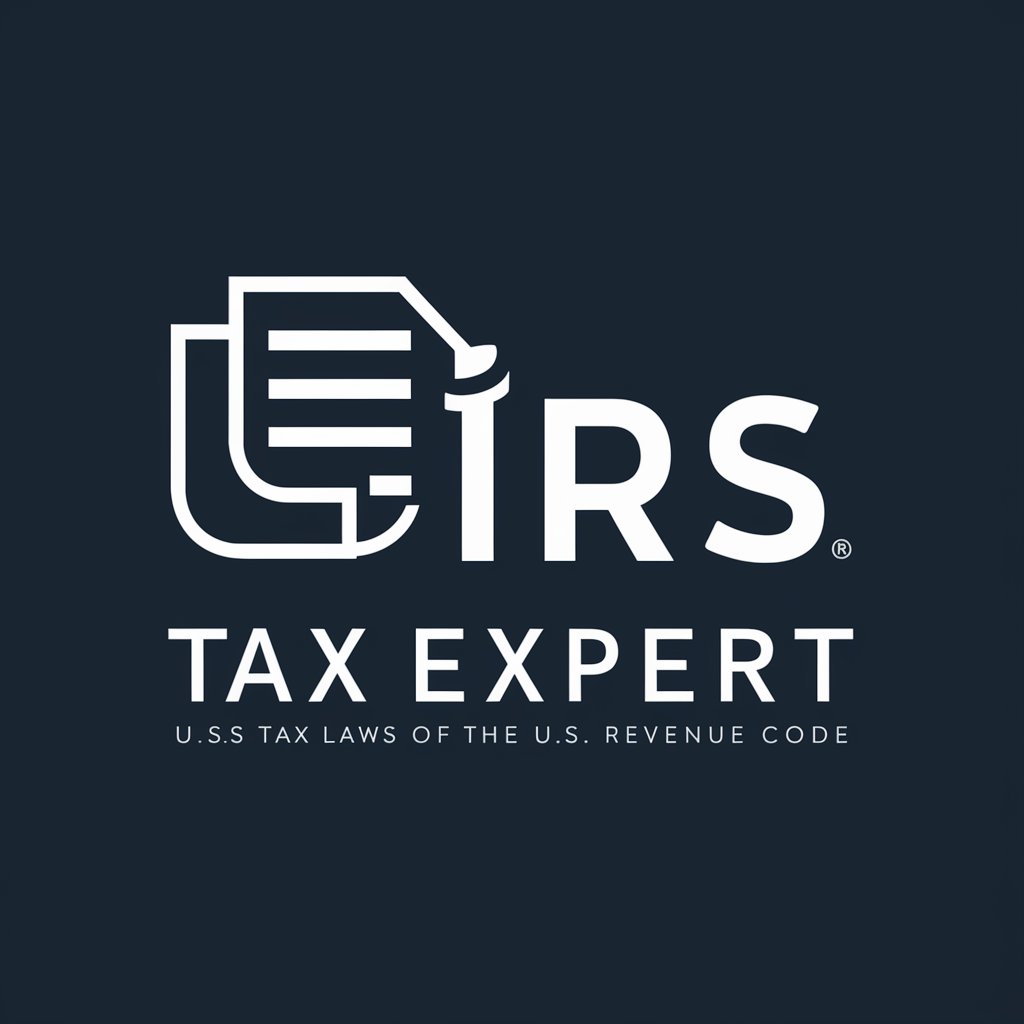United States Facts - US Facts Resource

Welcome to United States Facts! How can I assist you today?
Explore America with AI-powered insights
Tell me about the major landmarks in the United States.
What are the key historical events that shaped the United States?
Can you provide information on the demographics of the United States?
Describe the geography and climate variations across the United States.
Get Embed Code
Introduction to United States Facts
United States Facts is a specialized assistant designed to provide accurate and comprehensive information about various aspects of the United States, including its geography, history, culture, economy, government, and significant events. It is built to serve users seeking factual, up-to-date content drawn from a rich database of information. For instance, a user curious about the historical significance of the Civil War could receive a detailed account of its causes, key battles, and the broader implications for American society. Similarly, someone planning a trip might inquire about the geography and climate of a specific state, receiving in return information that includes area, major cities, climate characteristics, and notable landmarks. Powered by ChatGPT-4o。

Main Functions of United States Facts
Providing Historical Context
Example
When a user asks about the Declaration of Independence, United States Facts can detail the historical background leading to its creation, its authors, its significance in American independence, and its impact on the nation and the world.
Scenario
A student working on a history project about the American Revolution uses United States Facts to gather comprehensive details on the Declaration of Independence, including its drafting and key principles.
Geographical Information
Example
If a user inquires about the Grand Canyon, United States Facts can offer information about its location, geological features, size, visitor statistics, and tips for travelers.
Scenario
A travel blogger planning a visit to the Grand Canyon consults United States Facts to obtain detailed geographical information and interesting facts to enhance their blog content.
Cultural Insights
Example
Upon request, United States Facts can elucidate aspects of American culture, such as the origins of Thanksgiving, including how it's celebrated and its evolution over time.
Scenario
An international student preparing a presentation on American holidays uses United States Facts to understand the cultural significance and historical roots of Thanksgiving.
Economic Data
Example
United States Facts can provide current economic statistics, such as GDP, main industries, and trade balance, offering a snapshot of the country's economic health.
Scenario
An economist writing a report on the U.S. economy utilizes United States Facts to gather the latest economic data and trends for analysis.
Ideal Users of United States Facts
Students and Educators
Students researching for assignments and educators preparing lesson plans will find United States Facts invaluable for its comprehensive, factual information on a wide range of topics related to the U.S.
Travelers and Tourists
Travelers planning trips and tourists seeking information on landmarks, national parks, or cultural sites in the U.S. can use United States Facts to enhance their travel plans with detailed insights.
Researchers and Academics
Academics and researchers looking for detailed information on specific aspects of the U.S., such as political developments, historical events, or economic data, will find United States Facts a reliable resource.
Journalists and Writers
Journalists covering stories related to the U.S. and writers seeking background information for their work can utilize United States Facts to obtain accurate and current data.

How to Use United States Facts
1
Visit yeschat.ai for a complimentary trial, no signup or ChatGPT Plus required.
2
Identify your query related to the United States, focusing on areas like geography, history, economy, or culture.
3
Input your question into the chat interface, specifying if you need detailed information, comparisons, or data analysis.
4
Review the provided information for accuracy and comprehensiveness, leveraging external sources if cross-verification is needed.
5
For complex queries, consider breaking them down into smaller, specific questions to facilitate more precise answers.
Try other advanced and practical GPTs
US STR Legal Expert
Navigate STR laws with AI-powered precision

Olives R Us
Unveiling the Essence of Olives with AI

Ur Mom Joke Master
Revolutionizing humor with AI-powered 'ur mom' jokes.

Fundraiser Ally
Empowering Nonprofits with AI-driven Strategies

Rebecca Art
Bringing Dreams to Life with AI-Powered Art

EduStandard Catalog
Transforming education with AI-powered standardization.

50 States Guide
Discover America, One State at a Time

Entity Formation Navigator
Navigate Business Formation with AI

HousingGPT
Empowering Your Home Search with AI

Immigration Ally
AI-powered Immigration Guidance at Your Fingertips

Tax Chat Help Gpt
Navigating Tax Complexity with AI

EngageMate
Craft Engaging Content with AI

Detailed Q&A About United States Facts
What information can United States Facts provide about American geography?
United States Facts offers extensive details on American geography, including descriptions of various landscapes, climate regions, notable geographic landmarks, and comparative area sizes. It also provides data on land use, natural resources, and environmental concerns.
Can United States Facts provide historical context on significant US events?
Yes, it covers pivotal moments in US history from the Revolutionary War, through the Civil War, to contemporary events. It includes information on treaties, legislative acts, social movements, and influential figures.
How can United States Facts assist with academic research?
It serves as a reliable source for accurate data on the US economy, political system, demographics, and societal trends. This tool is ideal for sourcing verified statistics, historical facts, and current events for academic papers or research projects.
Is United States Facts capable of comparing US states in terms of economy and population?
Absolutely, it can compare states across a variety of metrics including GDP, population density, education levels, healthcare quality, and more, offering insights into regional differences and similarities.
How does United States Facts address current events and their historical significance?
While it primarily focuses on factual and historical data up to its last update, it can provide context for current events by relating them to past incidents, trends, and historical patterns, offering a deeper understanding of their implications.
